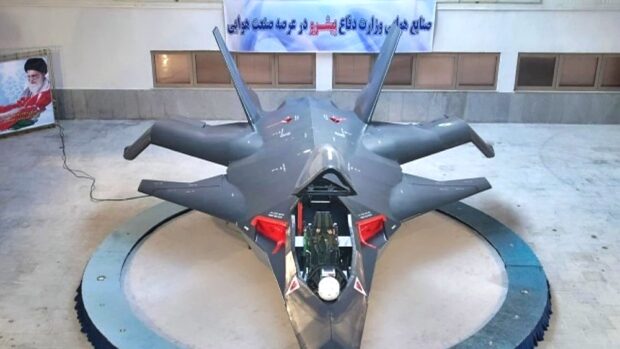Iran has shown its great capability to reverse engineer U.S. military drones, and its unmanned aerial systems (UAS) program has made great leaps forward. In 2011, a Lockheed Martin RQ-170 “Sentinel” was intercepted and then copied to create a new drone with similar capabilities.
This is a continuing development, and Tehran has long sought to produce clones of U.S. military hardware.
A new danger is that Russia has been sending U.S. and NATO-provided weapons and equipment captured in Ukraine to the Islamic Republic where they can also be copied. This has reportedly included platforms such as shoulder-fired weapons such as the Javelin anti-tank and Stinger anti-aircraft systems.
However, while Iran has shown a true talent in copying smaller systems, it has so far fallen short of copying more advanced platforms, notably manned combat aircraft. Yet, a decade ago, Tehran still unveiled what it claimed to be a single-seat stealth fighter aircraft.
Iranian officials claimed it had many of the characteristics of a fifth-generation fighter, notably stealth.
However, it could be argued that the stealth is so good that it could explain why we’ve heard very little of the aircraft in the years since. The development progress had not been publicly demonstrated since taxi trials took place in 2017.
It now appears that the program has been put on the back burner or canceled outright.
All Smoke and Mirrors
The aircraft was likely little more than an attempt to bolster morale with the Iranian people than to potentially scare the West – and the Islamic Republic has a long history of unveiling advanced hardware that seems simply too good to be true.
As was reported when the Conqueror-313 was unveiled, aviation and defense experts were quick to suggest the mock-up looked like a toy and might not even be able to fly – and certainly not be able to carry any weapons.
“It looks like the Iranians dumped some rudimentary flight controls and an ejection seat into a shell molded in what they thought were stealthy angles,” reporter John Reed wrote in the journal Foreign Policy.
“It looks like it might make a noise and vibrate if you put 20 cents in,” joked Andrew Davies of the Australian Strategic Policy Institute. “I can see (almost) how North Korea gets away with transparent nonsense due to isolation, but Iran has a population that’s much more switched on and connected, at least in the cities. I guess a possible explanation is that it plays well in the provinces, where people aren’t as savvy.”
The Latest Developments – What Do We Know?
The Conqueror-313 has largely remained “vaporware” for the past decade, but this past February, Iranian state media announced that while the aircraft had reached “technical maturity,” a decision was made to rework it as an unmanned drone that could see service beginning next year.
Though it is unlikely that the Islamic Republic’s stealth fighter will ever take flight, the West should still watch with caution the developments of Iranian unmanned aerial systems.
Tehran may not be able to ever produce a stealth fighter, but its drones are getting more sophisticated. Perhaps that was the plan all along – while we scoffed and mocked at their attempt to produce a “stealth fighter,” Iran was secretly expanding its other capabilities.
Source: The National Interest

